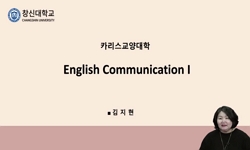Background : In response to the increasing demand driven by an aging population, the number of nursing homes and residents in Japan continues to rise. Upon admission, an assessment is conducted to develop a care plan, which serves as the basis for the...
http://chineseinput.net/에서 pinyin(병음)방식으로 중국어를 변환할 수 있습니다.
변환된 중국어를 복사하여 사용하시면 됩니다.
- 中文 을 입력하시려면 zhongwen을 입력하시고 space를누르시면됩니다.
- 北京 을 입력하시려면 beijing을 입력하시고 space를 누르시면 됩니다.
https://www.riss.kr/link?id=A109568293
-
저자
Yunkyu Lee ; Yasuyuki Hirai (Kyushu University) ; Melanie Sarantou (Kyushu University) ; Akihiro Kawaguchi (Kyushu University) ; Jia Wang (Kyushu University)
- 발행기관
- 학술지명
- 권호사항
-
발행연도
2025
-
작성언어
English
- 주제어
-
KDC
658
-
등재정보
KCI등재,SCOPUS
-
자료형태
학술저널
- 발행기관 URL
-
수록면
31-50(20쪽)
- 제공처
- 소장기관
-
0
상세조회 -
0
다운로드
부가정보
다국어 초록 (Multilingual Abstract)
Background : In response to the increasing demand driven by an aging population, the number of nursing homes and residents in Japan continues to rise. Upon admission, an assessment is conducted to develop a care plan, which serves as the basis for the services provided to residents. However, the current process has limitations in effectively gathering comprehensive information about residents. Therefore, this study aims to examine the impact of the Life Map Design Tool (LDT) on the development of care plans.<BR/>Methods : For this study, one care manager from a nursing home in Japan was designated as a co-worker. The research involved 25 nursing home residents and was conducted in two phases. The first group consisted of existing residents, while the second group comprised new residents who moved in between September 1, 2023, and December 31, 2023. To assess the impact of the Life Map Design Tool, the Holden Communication Scale and Ikigai-9 were used to measure outcomes before and after its implementation. The collected data was analyzed using statistical methods.<BR/>Results : The Wilcoxon Signed-Rank Test on 25 nursing home residents showed significant positive effects. For Communication, the first phase (n=17) showed an 11.768-point decrease in post-test scores, while the second phase (n=8) showed a 4.375-point decrease, both statistically significant. For A Life Worth Living, the first phase (n=17) showed a 13.368-point increase, and the second phase (n=8) a 6.121-point increase, confirming significant improvements. Lastly, A comparison of care plans revealed notable differences. In the provisional care plans, residents gave brief responses, whereas after using the Life Map Design Tool, the main care plans reflected more freely expressed opinions, allowing for personalized and appropriate care planning.<BR/>Conclusions : This study demonstrates that the Life Map Design Tool serves as a mediating tool that facilitates communication between care managers and residents during nursing home assessments. Therefore, further research utilizing this tool is encouraged to enhance the Quality of life in nursing homes.
동일학술지(권/호) 다른 논문
-
CELLNET: Biomimetic Cell Interface Adaptable to Physical Stimuli and Environment
- 한국디자인학회
- Hoon Yoon
- 2025
- KCI등재,SCOPUS
-
Crossmodal Correspondences Between Brand Name and Typeface in Brand Communication
- 한국디자인학회
- Yesel Jun
- 2025
- KCI등재,SCOPUS
-
Bridging Social Learning with Technology: The Use of a Social Robot in Preschool Development
- 한국디자인학회
- Jaehee Chung
- 2025
- KCI등재,SCOPUS
-
- 한국디자인학회
- Jaeyoung Myung
- 2025
- KCI등재,SCOPUS
분석정보
연관 공개강의(KOCW)
-

Communication: Early Language
Teachers TV Teachers TV -

Developing Communication for Language and Thinking
Teachers TV Teachers TV -

How to Improve Your English Communication Skills: Speaking, Vocabulary and Grammar
한서대학교 Shaneil Dipasupil -

English Communication II
창신대학교 김지현 -

English Communication I
창신대학교 김지현






 DBpia
DBpia


